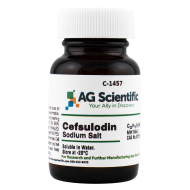The common causes of acute diarrhea are viruses and bacteria. Diarrhea is a symptom of infections caused by a host of bacterial, viral and parasitic organisms, most of which are spread by feces-contaminated water. Escherichia coli (E. coli) are a large and diverse group of bacteria. Although most strains of E. coli are harmless, others can make you sick. Some kinds of E. coli can cause diarrhea, and other illnesses such as urinary tract infections, respiratory diseases. Still other kinds of E. coli are used as markers for water contamination - they are not harmful themselves but indicate water contamination. Water testing can help detect and identify coliform bacteria, including the fecal pollution indicator, E-Coli.
Water Contamination
The common causes of acute diarrhea are viruses and bacteria. Diarrhea is a symptom of infections caused by a host of bacterial, viral and parasitic organisms, most of which are spread by feces-contaminated water. Escherichia coli (E. coli) are a large and diverse group of bacteria. Although most strains of E. coli are harmless, others can make you sick. Some kinds of E. coli can cause diarrhea, and other illnesses such as urinary tract infections, respiratory diseases. Still other kinds of E. coli are used as markers for water contamination - they are not harmful themselves but indicate water contamination. Water testing can help detect and identify coliform bacteria, including the fecal pollution indicator, E-Coli. It is important to test water quality to ensure it meets standards for safe consumption. Water quality testing is done using the MI Agar Membrane filtration method. Cefsulodin sodium salt is an antibiotic added to MI agar as a contamination control that inhibits the growth of non-target bacteria.What is Cefsulodin Sodium Salt?
Cefsulodin sodium is a semi-synthetic third generation cephalosporin antibiotic, with a structure similar to penicillins and beta-lactams. Like beta-lactams, cephalosporins interfere with PBP (penicillin binding protein) activity involved in the final phase of peptidoglycan synthesis. PBPs are enzymes which catalyze a pentaglycine crosslink between alanine and lysine residues providing additional strength to the cell wall. Without a pentaglycine crosslink, the integrity of the cell wall is severely compromised and ultimately leads to cell lysis and death. In ground-water studies, it is often desirable to enumerate both total coliforms and E. coli. This method can also be used to enumerate E. coli in surface waters; however, plates may be difficult to read because of non-target growth in moderately or highly polluted waters. To overcome this issue cefsulodin sodium salt is added to the agar to inhibit the non-target growth. Cefsulodin has a specific activity against Pseudomonas aeruginosa. It has no significant activity against other Gram-negative bacteria and very limited activity against Gram-positive and anaerobic bacteria. E-Coli is a Gram-negative bacteria that is resistant to the effect of cefsulodin sodium salt, making it the ideal antibiotic to be used for contamination control.

